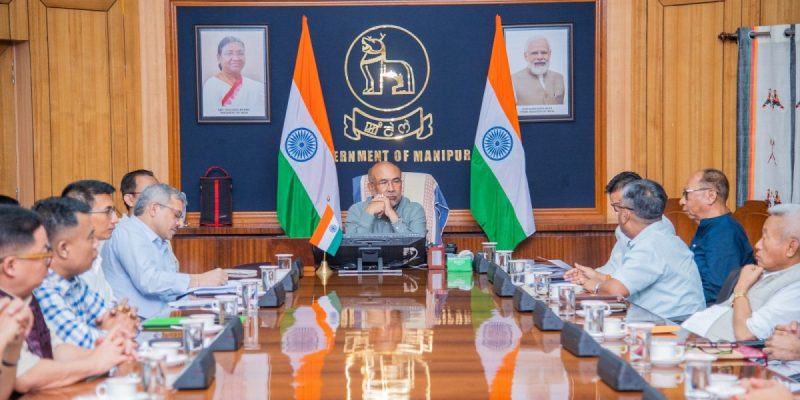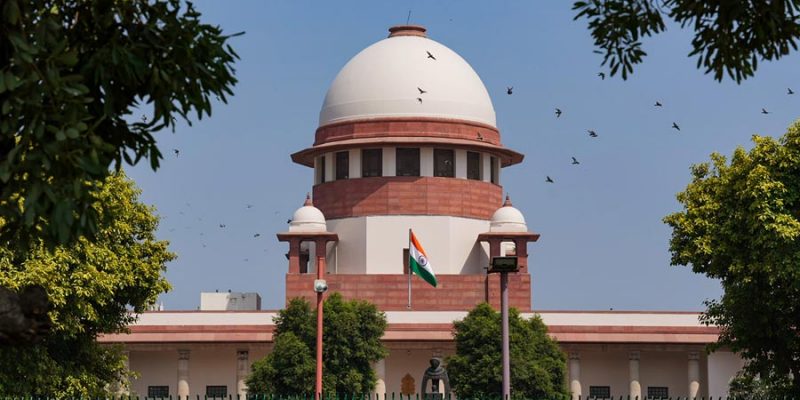‘I Was Scared, Didn’t Take a Chance’: Muslim Workers Flee After Violence in Gurugram’s Badshahpur

Gurugram: Mahak Cotton Store at Badshahpur in suburban Gurugram was one of its kind. Managed by Mohammad Shahid, and owned by one Surinder, the shop sold inexpensive mattresses and pillows, folding beds, and water coolers, the type that could be afforded by numerous working class immigrants living in the area.
On Tuesday afternoon, August 1, a mob – under the impression that it was a Muslim-owned shop – destroyed the small establishment.

Mahak cotton shop vandalised by a mob. Photo: Ajoy Ashirwad Mahaprashasta/The Wire
“It wasn’t just vandalised; it was looted too,” said a bystander, recalling how a mob chanting ‘Jai Shri Ram’ stole almost everything that the shop had stocked. “There were around 150-200 people. They carried lathis (sticks) and went about targeting most shops that they thought were owned by Muslims,” he said.
The store was among some other shops set up by Muslim immigrants in the Hindu-majority Badshahpur which faced the wrath of Hindutva activists in the aftermath of communal riots in Nuh on Monday, July 31.
Across the street, a juice shop stood entirely demolished, and so were a dhaba (eatery) and a counter that said “Irfan Pahalwan”, which claimed to treat chronic body pain.

Ransacked shed of the cotton shop. Photo: Ajoy Ashirwad Mahaprashasta/The Wire
Around 200 metres away, at another end of the village, the mob created an even bigger havoc. It set on fire a scrap shop, another dhaba, and multiple tin houses that were homes to immigrants over the last few years. Most of the residents have left their houses, leaving behind much of their belongings in the debris.
Suresh Yadav, a resident of the village, said that the mob arrived suddenly on Tuesday afternoon and began demolishing the shanties. “They knew that Muslim immigrants stayed here. They chanted ‘Jai Shri Ram’ but carried swords and lathis. What good will come out of attacking the poor? They were anyway very few in number,” he said.
Yadav was confident that the communal tension was fuelled by political groups in view of the 2024 Lok Sabha polls. “Who were these people who were forced to leave? Some of them were from Mewat, some from UP, some from Bihar. Their household earnings were nothing more than Rs 8,000-10,000 per month. They have been living here for years. Some worked as house helps, some as car cleaners, and some worked odd jobs,” Yadav said.
“Before the 2024 Lok Sabha polls, we will likely see more such communal disturbances,” he added.

Shanties in Badshahpur burnt by the mob. Photo: Ajoy Ashirwad Mahaprashasta/The Wire
The demolished shanties bore a desolate look. Surrounded by glitzy high rises, these temporary houses were made of tin and asbestos sheets. “Look at the condition in which they lived. There is no drinking water; no bathrooms, no proper lights. They had absolutely nothing. Yet, they became an eyesore for the mob just because they were Muslims,” said Yadav.
Another vegetable-seller Pinku said, “These people have been living here for many years. They had nothing to do with the Nuh violence. Yet, they became the targets. The mob was out here for revenge.”
Both Yadav and Pinku added that the mob looted houses and shops before setting them on fire. “You can see that the cash counter is empty in the dhaba that got burnt. They left nothing, stole even chairs and tables,” Yadav said.
Muslim immigrants forced to flee overnight
Most of these Muslim immigrants stayed with their families, and were forced to flee overnight.
“I was scared, so I didn’t take a chance. Once I heard that my shop had been demolished, I came to Sambhal with my family,” Md. Shahid, manager of Mahak Cotton Store told The Wire.
Shahid said that he never had an inkling that the Nuh violence would affect them too. “The riots happened in Nuh which is 50 kilometres away from Badshahpur. What did we do to deserve this kind of treatment,” he asked.
Also read: Haryana Violence: How Provocative Videos and a Background of Hate Preceded the Nuh Riots
“I have been managing the store since 2009. I had friendly relations with everyone. Even Parwez, who owned the juice shop across the street, was friendly with everyone in the neighbourhood. Yet, I hear that some people of Badshahpur directed the mob towards our shops. I also heard that some of those who stole things from my shops were people whom I knew,” said Shahid.
Badshahpur remained tense amidst police presence throughout the last two days. The old mosque at the centre of the village was locked with police guarding its premises. A few Muslims who were residents of the village appear to have fled. Villagers, however, said that some of them were still there but had not left their houses at all, and had kept them locked. A temple stood right adjacent to the mosque.
Village elders claimed that no one from Badshahpur was responsible for the violence, and that everyone in the mob was an outsider. “We never had any communal disturbance here. The Muslim homes you see…[people] have been living here since the last 200 years. This is the first time we watched an incident like this,” said one among the elders.
The mob, however, didn’t merely target the shanties and shops around Badshahpur. It entered the village to target two meat shops owned by two old residents of the village. The meat shops were destroyed and looted, following which even the old Muslim residents left the village.

Meat shop owned by a village resident. Photo: Ajoy Ashirwad Mahaprashasta/The Wire
The village youth, however, justified the violence. “The Muslims beat the Hindus first in Nuh. What happened here was a reaction to the Nuh violence,” said Arun, even as some elders around him tried to stop him.
Similarly, two 15-year-old boys of Badshahpur seemed excited that Muslim immigrants had fled. “All the shops which were attacked were owned by Mullahs. They did not belong here. Good that they left, or else we would have made them run for their lives,” said one of them proudly.
A deepened communal animosity against Muslims
Religious polarisation ran deep, despite a consensus among Hindus that the mob violence and subsequent looting of Muslim establishments may have tarnished the perception of the village. Rumours of various kinds ran the show in the aftermath of the violence. Almost everyone in Badshahpur spoke about how on Wednesday morning a Muslim man allegedly killed a Hindu shopkeeper in Maruti Kunj, a locality merely a kilometre away from the village.
However, upon enquiry, The Wire found that no such killing had taken place. But Badshahpur residents believed the rumour to be true, and that has only deepened their communal animosity against Muslims.
Around two kilometres away, a slum in Sector 70, where Muslim immigrants from West Bengal lived, was similarly destroyed and looted by the Hindutva mob. Most of them fled overnight. Those who remain, fear for their safety in the absence of any assurance from government agencies.
Meanwhile, onlookers had a field day in Badshahpur with television OBs, journalists, civil society activists visiting the village. Many of them were amused with so much attention. “It feels like an action film,” an eight-year-old kid from Badshahpur told The Wire.
The swanky offices, luxurious high rises, and smooth flyovers have come to dwarf villages like Badshahpur – making the residents feel trapped in their settlements amidst the development fancies of the millennium city.
On its way to becoming a business destination, villages like Badshahpur in the greater Gurugram area have become a home to numerous working class immigrants who worked behind the veil to keep the city running. They lived in their temporary shanties to earn a livelihood, but could not afford to complain about their daily struggles.
The governments, too, did not spare a look at their abysmal living conditions. Their labour is cheap and essential for the development goals of the city.
The shanties of Gurugram have suddenly shot to limelight, even as hundreds of Muslim workers flee the millennium city.







